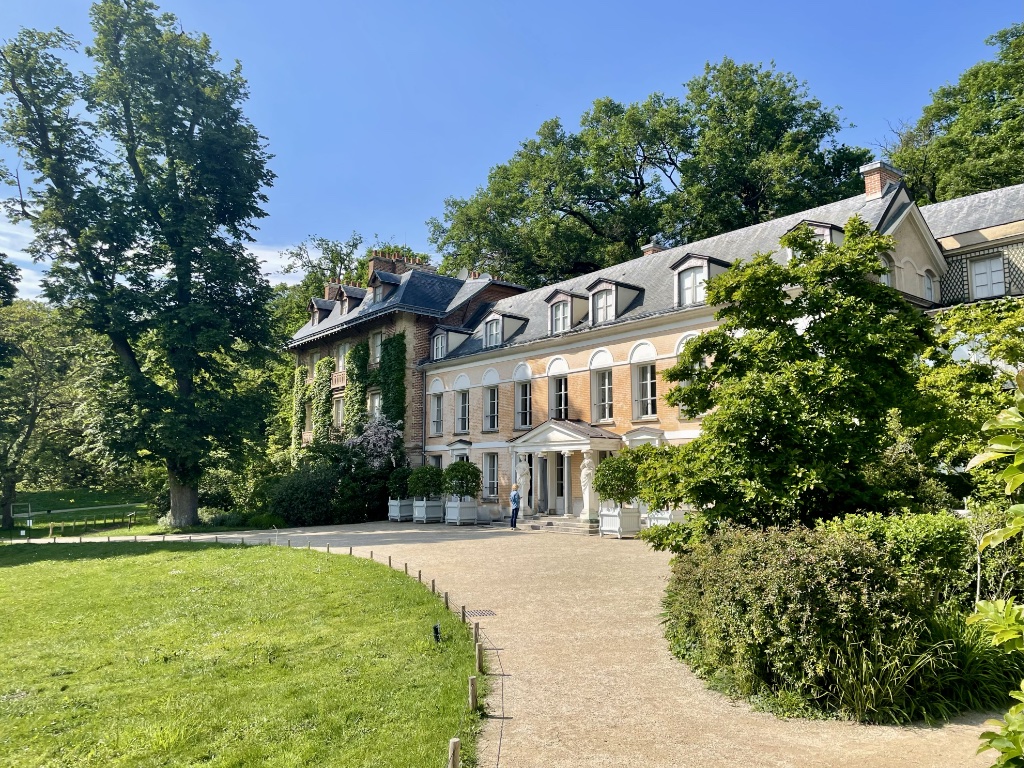
If you are in Paris during the Olympics or Paralympics, you may be looking for a way to escape the madness for a day. I’ve got just the place for you: the Vallée aux Loups (Valley of the Wolves).
This park with an evocative name is only a 30-minute RER (suburban train) ride and a short walk from Paris, but will transport you to another world. The purported attraction is the Maison de Chateaubriand, where the great French writer lived for 10 years (1807-17), but the true appeal for me is the Arboretum across the road from it.
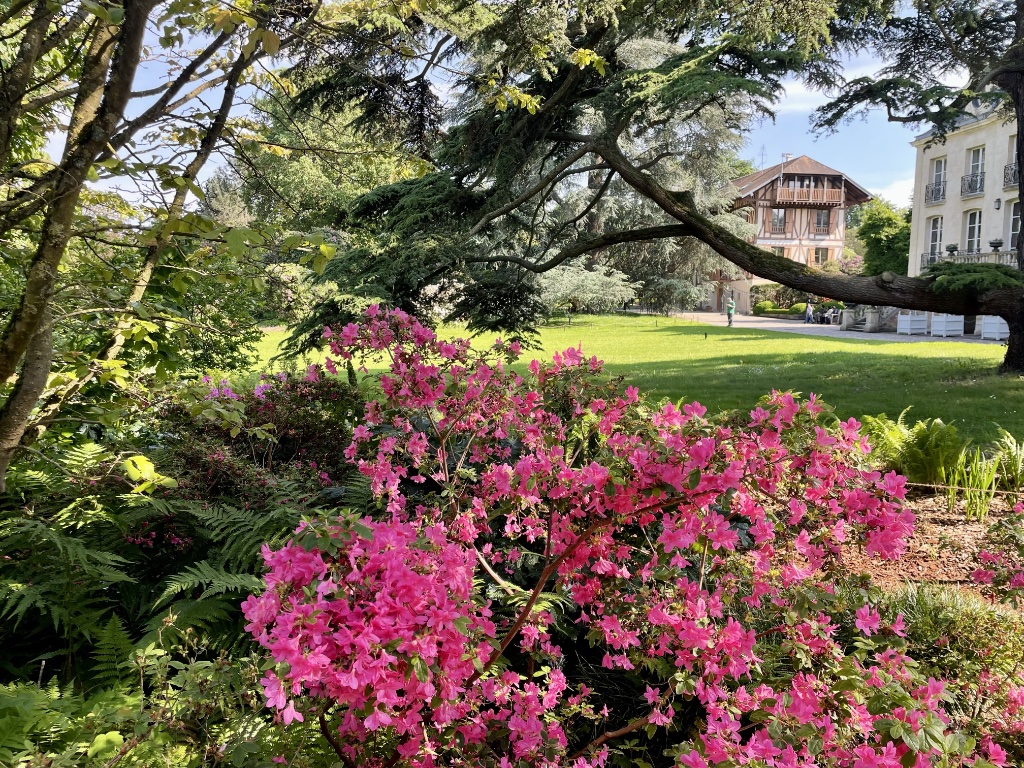
We started our visit by picnicking on a bench in the Arboretum (a forbidden act, but we didn’t discover that until later) under threatening skies, with a view of a sweeping lawn and the trees and flowers beyond. The rain politely held off until we finished eating. It was time to visit the house of Chateaubriand, a welcome shelter from the rain.
The decade that François-René de Chateaubriand and his wife Céleste Buisson de la Vigne spent in the house marked an important period in the life of the globetrotting writer and politician, who is considered the precursor of the 19th-century Romantics. An avid gardener, he planted many of the trees, often exotic species brought back from his extensive travels, in the park around the house. Perhaps more importantly, he began to write his masterpiece, Mémoires d’Outre-Tombe (Memoirs from Beyond the Grave), during that time, in an office he created for himself in the Velleda Tower on the property.
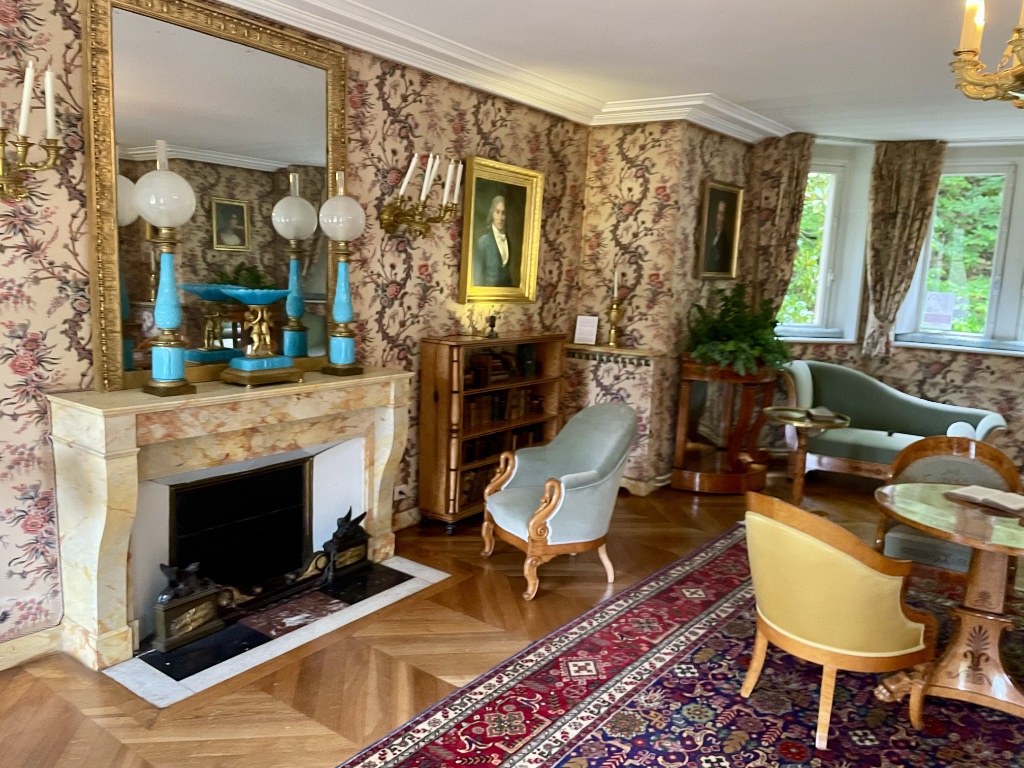
The house has been charmingly done up with period furnishings in the style of the time he lived there and is well worth a visit. Each room has informational cards with informative descriptions and stories about the inhabitants and their many guests from Paris, including some of Chateaubriand’s lovers (he and his wife, whose marriage was arranged by their families, admired each other, but there was no love lost between them). One of the cards tells an amusing story recounted by Madame, about their drunken cook, Mesnil, who, on the rare occasions when he was bullied into not drinking, would make a mess of the meal, notably the time he put a sugar loaf in the soup rather than beef. Better drunk than sorry.
The house passed into other hands after the Chateaubriands left, and in the early 20th century was turned into a psychiatric clinic by its new owner, Dr. Henri Le Savoureux, who also held a literary salon that attracted such notables as Berenice Abbott, Antoine de Saint-Exupéry, Paul Valéry, Paul Morand, Paul Valéry and Marc Chagall.
During the Second World War, Dr. Le Savoureux hid several members of the Resistance on the property, even while the Gestapo was assassinating other members in the forest near the house.
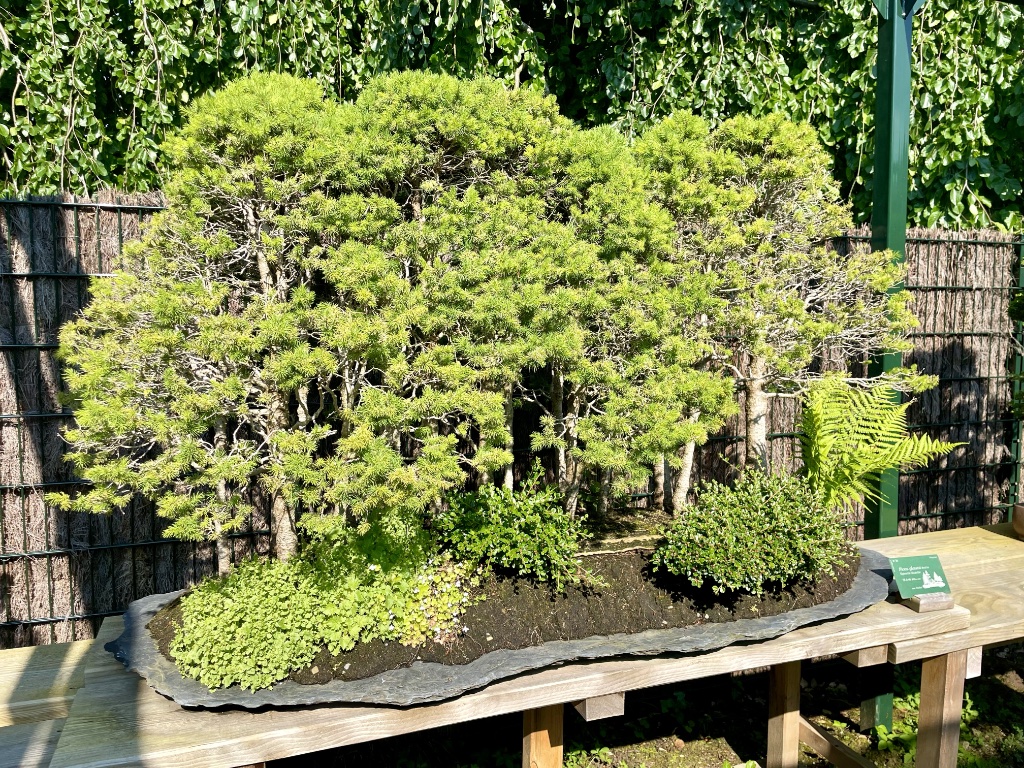
By the time we had finished visiting the house, the sun had come out, and we crossed the road again to further explore the Arboretum, which is home to over 500 species of trees and shrubs, as well as a collection of stunning bonsai in the greenhouses at the far end. Larger than any I have seen before, some of them are grouped together to form charming miniature forests.
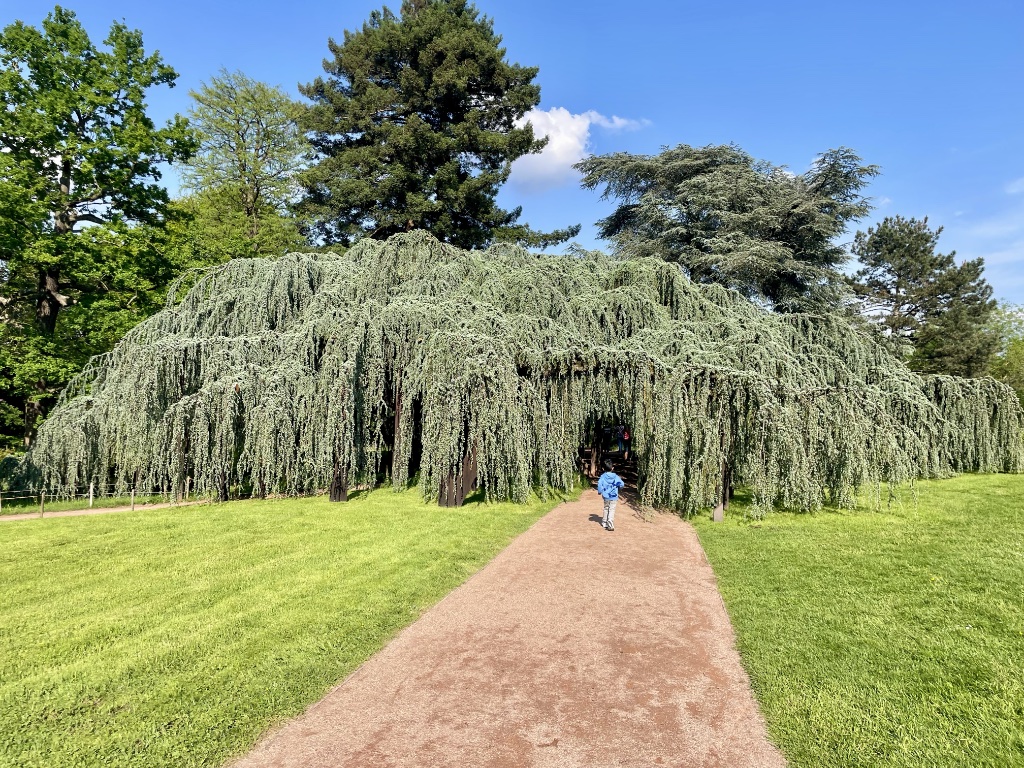
The Arboretum’s pièce de resistance is a spectacular weeping blue Atlas cedar (Cedrus atlantica ‘Glauca Pendula’), a cultivar that was transplanted here in 1895 and mutated into a weeping version of the tree. It is the source for all others like it. Its branches spread over 680 square meters (over 7,319 square feet) and gracefully drape to the ground, creating a huge umbrella-like shelter that visitors can wander through to access a magical garden reminiscent of Monet’s in Giverny (but far less crowded), with its streams and little footbridges.

Les Thés Brillants, the tea room on the grounds was rather overrun with visitors when we were there, but we managed to have a cake and a cup of tea. Only brunch is served on Sunday.
We were lucky enough to visit the Arboretum in mid-May, when enormous banks of rhododendrons were in bloom, but not a single wolf was spotted throughout the day.
Favorite